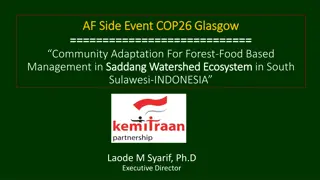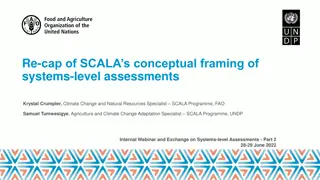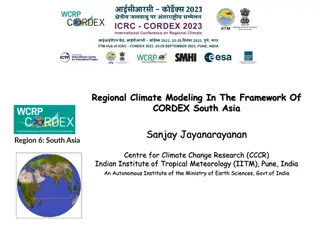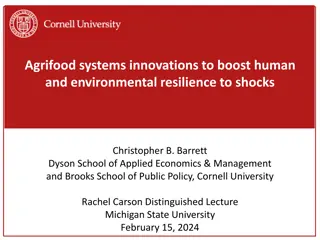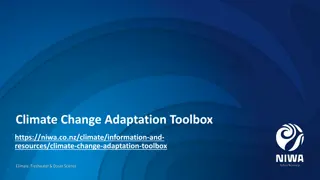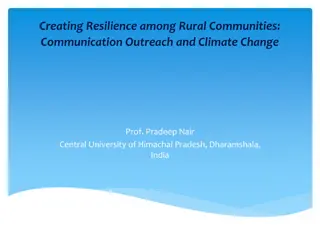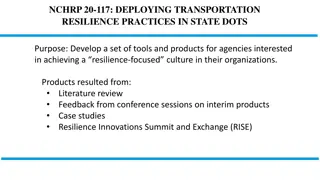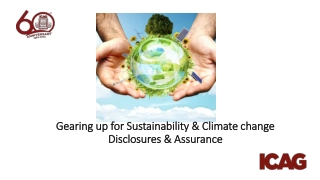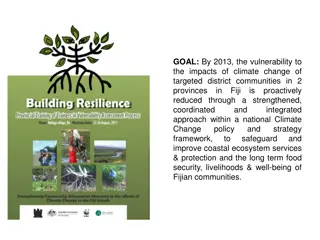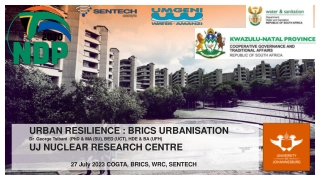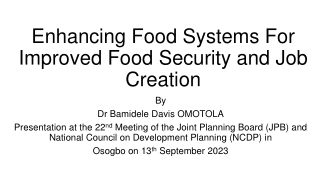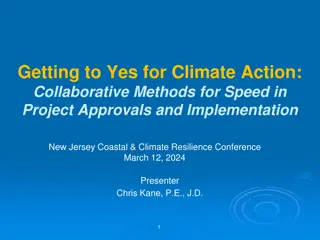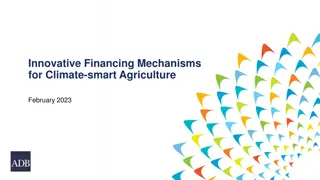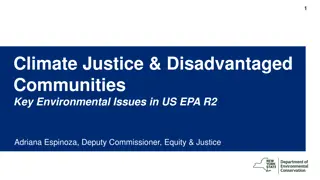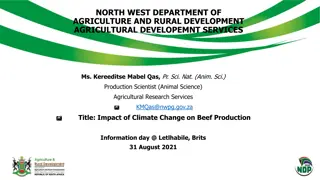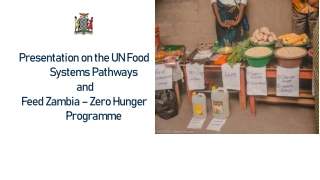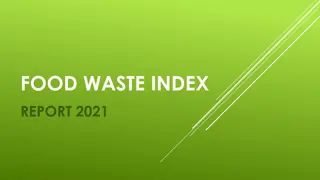Transforming Food Systems Through Agroecology for Climate Change Resilience
Agroecology offers a transformative approach to address the unsustainable nature of current food systems, which contribute significantly to greenhouse gas emissions, biodiversity loss, soil degradation, and social inequity. By shifting towards diversified agroecological systems, focusing on soil health, and empowering farmers, agroecology aims to create a sustainable and resilient food system that integrates economic, environmental, social, and cultural objectives.
Download Presentation

Please find below an Image/Link to download the presentation.
The content on the website is provided AS IS for your information and personal use only. It may not be sold, licensed, or shared on other websites without obtaining consent from the author. Download presentation by click this link. If you encounter any issues during the download, it is possible that the publisher has removed the file from their server.
E N D
Presentation Transcript
Addressing climate change: Transforming food systems through agroecology Oliver OLIVEROS Coordinator, Agroecology Coalition Email: o.oliveros@agroecology-coalition.org www.agroecology-coalition.org
Current food systems are not sustainable Produce about 1/3 of greenhouse gases Are responsible for 80% of biodiversity losses Pollute the soil, air and water Are vulnerable to climate change Do not address the triple burden of malnutrition Maintain social inequity and the loss of cultural values Directly associated with current food systems based on industrial agriculture
Impacts on soil health Soil fertility depletion Soil carbon loss Greenhouse gas emissions Irrigation water scarcity Water pollution . Source: The Christensen Fund 3
We need transformational change IPES-Food From uniformity to diversity2016 IPBES report on land degradation2018 TEEB for Agriculture and Food 2018 IPBES report on Biodiversity2019 HLPE report on Agroecology 2019 IDDRI report on Agroecology 2019 IPCC report on CC & land 2019 GSDR 2019 Global comm. adaptation 2019 GBO-5 2020 HLPE 2020 report EC Mission on soilhealth and food 2021 IPCC report 2022 CBD Target 10 All mention agroecology
A different paradigm: Diversified agroecological system Economic Environmental To address different objectives simultaneously Climate M & A Health DIVERSIFIED AGROECOLOGICAL SYTEMS Social Cultural
10 Elements of Agroecology 13 Principles of Agroecology 6
Soil is central in agroecology Reversing soil degradation Restoring soils and ecosystem stability . Source: The Christensen Fund 7
Agroecology: A different paradigm Not just a set of agricultural practices Addresses the entire food system (production to consumption) Takes the best of all innovations that are compatible with the 13 principles of agroecology, combined with traditional and farmer knowledge Changing social relations, empowering farmers, adding value locally and privileging short value chains that link consumers and producers Holistic, integrated approach to reach economic, environmental, climate, health, social and cultural objectives Aims to achieve the sustainable development goals in an integrated manner.
THANK YOU for your attention secretariat@agroecology-coalition.org www.agroecology-coalition.org







